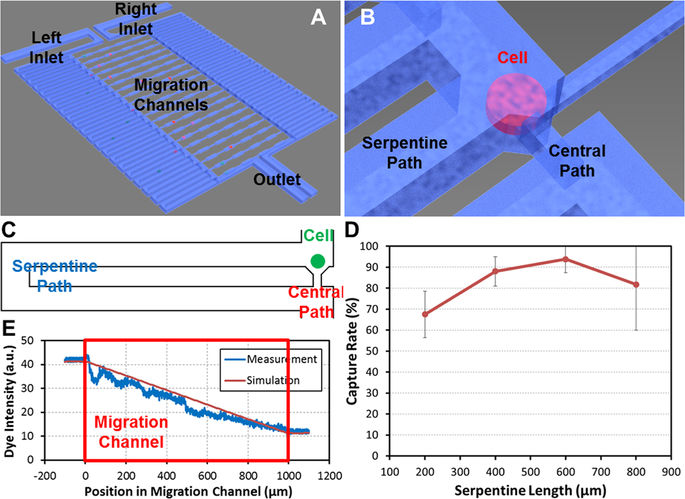Cell migration plays an important role in many physiological and pathological processes of organisms such as proper wound repair, and tissue homeostasis, especially in immune response and tumor invasion to which significant attention has been paid. Chemotactic migration and intravasation can occur both in the cell motility of immune cells and tumor cells. The study of the intravasation step has been hampered though by the lack of accessible in vitro techniques and the studies mainly focus on global differences in large cell populations and require considerable time. Furthermore, single-cell resolution of mechanical differences and direct visualization are limited by several factors. Hence, there is a need to develop in vitro devices which can realistically confine geometry of intravasation into and migration through blood and lymphatic capillaries. It should also allow for the direct visualization of the process as well as allowing for the separation and further characterization of cells with differing chemotactic properties. The single cell migration chip is a versatile and high throughput device to study the single cell migration, which can meet all the requirements mentioned above.
The single cell migration chip is a microfluidic device which consists of single-cell capture sites and migration channels. To achieve single-cell resolution, cells are loaded by gravity flow and hydrodynamically captured at each capture site. The capture area is directly adjacent to the entrance of the narrow migration channel, which is an innovative feature compared to other devices. The pressure and velocity field are simulated for various channel geometries to optimize the length of the serpentine path and achieve a high cell capture rate.
 Figure 1. The diagram of Single-Cell Migration Chip
Figure 1. The diagram of Single-Cell Migration Chip
The migration of cancer cells and immune cells can be driven by chemotaxis whereby differences in the concentration of growth factors or some chemokines which can induce tumor cells or immune cells to migration. To model this in vivo condition, the migration channels in our device are designed to specifically study the movement of cells with a concentration gradient profile generated by diffusion.
 Figure 2. The experimental results of Single-Cell Migration Chip
Figure 2. The experimental results of Single-Cell Migration Chip
Besides the customized chip with length of the serpentine path optimized and a cell capture rate to suit your experimental needs, other attempts have been made to get the best experimental results. Our platform also provides a method for chemotactic-based selection. Highly chemotactic and non-chemotactic cells were selectively retrieved after the migration assay for further propagation and analysis.

*If your organization requires signing of a confidentiality agreement, please contact us by email.
Online Inquiry